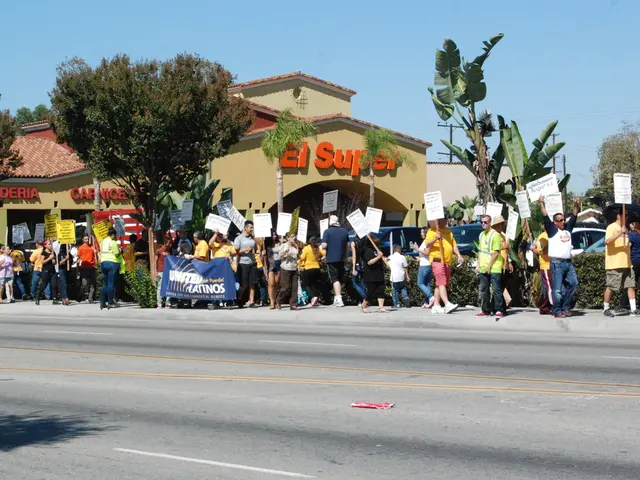Unveiling Deepfakes in Political Campaigns: A Guide to Exposed Deceptions
Combating Deepfakes in Political Ads: A Multi-Pronged Approach
Deepfakes, artificial intelligence-generated videos or audio clips that present false depictions of reality, pose a significant threat to the integrity of political advertising. In the digital age, it's crucial to stay informed, vigilant, and proactive in combating their spread.
Monitoring and Regulation
Social media platforms and other online spaces have a responsibility to prevent the spread of misinformation, including deepfakes. They can work closely with these companies to implement stricter verification processes for political advertisers and use detection algorithms to flag or remove deepfake content. Advocating for transparency in political advertising, including disclosure of funding sources, targeting practices, and any use of manipulated media, is also essential.
Verifying Authenticity
Verifying the source of political ads is crucial to ensure their authenticity. Checking the candidate's or political party's official website or social media account can help. Deepfakes often leave behind clues that can help identify them, such as facial movements that appear unnatural or stiff, lip-sync that is off, abrupt changes in facial expressions, inconsistencies in lighting or shadows, and lack of context or supporting evidence for the claims made in the deepfake.
Technical Detection
State-of-the-art detection systems employ deep convolutional neural networks, like the 59-layer Fake Dense Inception Network (FDINet59), which achieves up to 95% accuracy identifying deepfakes generated via GANs and autoencoders. Models also analyze subtle inconsistencies in facial movements, lighting, and audio-visual synchronization to spot synthetic alterations.
Human Review and Transparency
Multi-tiered review involving technical screening and expert human judgment is essential. Technical tools perform initial scalable detection, flagging suspicious content for further review. When flagged content poses high risks—like political misinformation—trusted methods involving expert human moderators or verified journalists provide contextual analysis and final validation. Transparency and labeling are also crucial, with political videos suspected or confirmed to be deepfakes clearly marked or labeled to inform viewers and reduce misinformation effects.
Education and Collaboration
Educating the public on deepfake risks and detection cues enhances communal resilience against manipulated political messaging. Collaboration with social media platforms, independent organizations, and media outlets offering fact-checking services, including deepfake detection tools, is also vital.
Accountability and Regulation
Holding social media platforms accountable for their role in political discourse and demanding that they take action to prevent the dissemination of deepfakes is crucial. This includes setting up rapid response teams that monitor social platforms, verify content authenticity, and release counter-statements or verified footage in response to deepfake attacks. Establishing a network of experts, including digital forensic analysts, cybersecurity professionals, and legal experts, who can be called upon to verify the authenticity of contentious political ads, is also essential.
Conclusion
In the fight against deepfakes in political ads, a combination of advanced AI detection models, multi-tiered review involving technical screening and expert human judgment, risk-based content classification, transparency measures such as labeling, and education efforts is essential. By staying informed, using media literacy and critical thinking, leveraging technology, and advocating for regulation and accountability, we can combat the spread of deepfake political ads and promote a more transparent and trustworthy political discourse.
- Politicians need to be aware of the damage disinformation from deepfakes can cause to their reputation and the integrity of political advertising.
- Learning about deepfakes and understanding how they are created is essential for politicians to protect their branding on social media services.
- Educational institutions and self-development resources must play a role in teaching people about the risks of deepfakes, helping to reduce their impact on politics.
- In addition to technology-based solutions for detecting deepfakes, collaboration with entertainment and general-news media outlets is necessary to verify the authenticity of political ads.
- Cybersecurity measures, data-and-cloud-computing, and deepfake detection tools can help prevent the dissemination of deepfake ads on social media platforms and other online spaces.
- Crime-and-justice measures could potentially be employed against those who maliciously create and spread deepfake political ads, encouraging them to act more responsibly.
- By working together, politicians, the public, media outlets, and social media companies can combat deepfake political ads and promote a more trustworthy and transparent political discourse.
- Regulation and accountability are crucial in ensuring that social media platforms prioritize the prevention of deepfake political ads, protecting the resources and credibility of political services.




